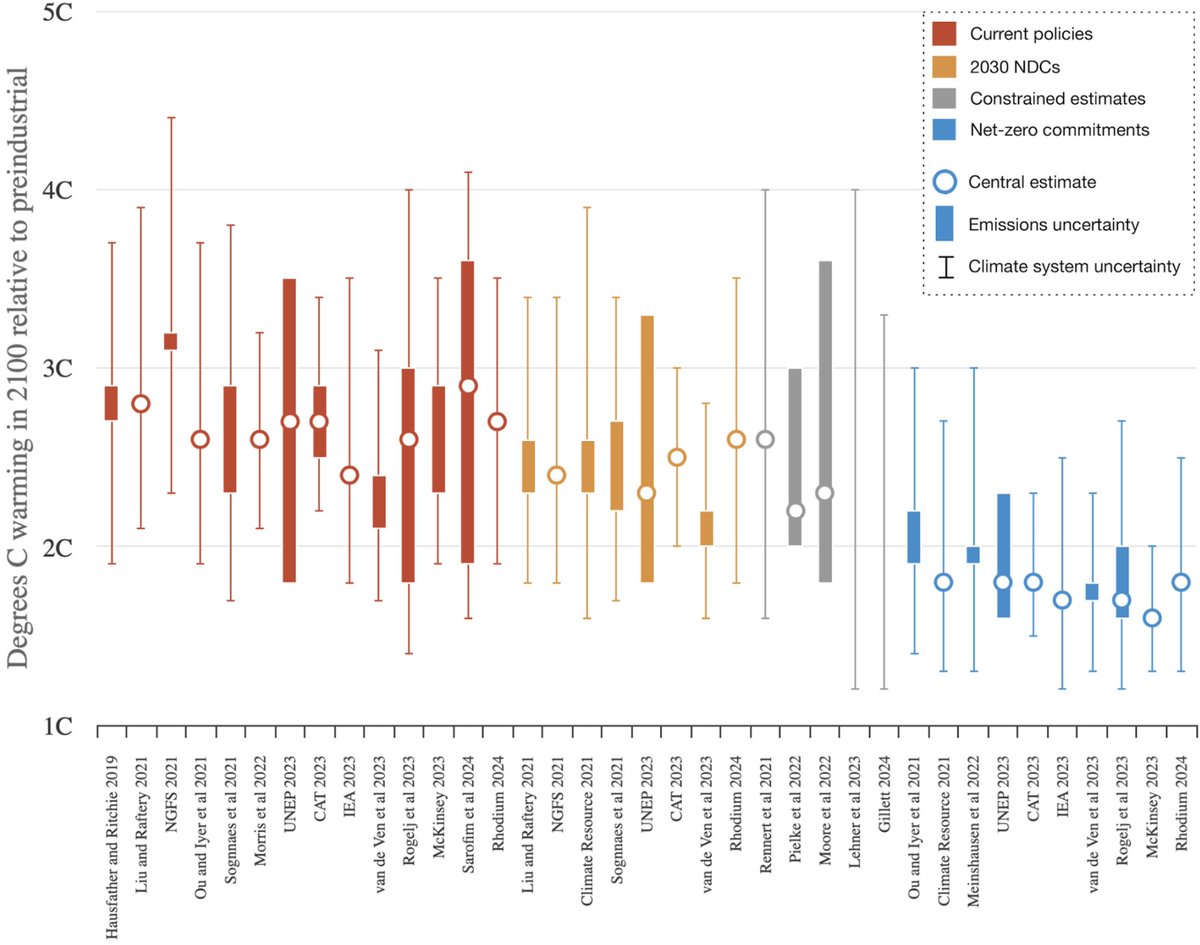While renewables will play a large role in decarbonizing electricity, there is also a need for clean firm generation. Advanced reactors are a promising technology to fill that gap, and in a piece today we take a look at economics of @NuScale_Power thebreakthrough.org/issues/energy/…
1/12
1/12
To be competitive in the short-term, advanced reactors like NuScale need to be reasonably cost-competitive with natural gas – which currently fills the role of firm, dispatchable generation. We compare the two based on their levelized cost of energy (LCOE). 2/12
The LCOE of nuclear, it turns out, is very sensitive to the discount rate used, as it involves a very high upfront investment with very long-term returns over a ~60 year lifetime. Standard LCOE calculations – such as those from @Lazard – use a rather high 10% discount rate. 3/12
Here is how the LCOE of nuclear compares to natural gas across different discount rates. We look at three nuclear cost scenarios (stated NuScale cost, NuScale assuming 50% cost overruns, and conventional nuclear) and three gas scenarios (low, base, and high gas price): 4/12 

Using NuScale's base cost estimate and the reference gas price, NuScale cost-competitive at discount rates less than 5%. This is 7.5% for high gas prices and 2.5% for low gas prices. 5/12
We can also look at the required subsidy – or implied carbon price – needed to make NuScale competitive with natural gas across different discount rates: 6/12 

If advanced nuclear received a production tax credit of $25/MWh similar to wind – and, importantly, assuming it can be built on time and on budget – it would be quite competitive with natural gas at discount rates high enough (8%+) to attract significant private capital. 7/12
At the same time, there is a case to be made that infrastructure investments to decarbonize the economy should use a much lower discount rate than is common for private capital investments. After all, high discounting would lead to sub-optimal levels of decarbonization. 8/12
Using a government/public sector discount rate of 3% or so makes investing in nuclear much more attractive given the long lifetime of the projects. 9/12
This still depends on ability of advanced reactors to be built reasonably on time and on budget. Their small and modular nature should help overcome some of the cost overruns that have plagued massive bespoke reactor projects in recent years (e.g. Vogtle), but we shall see. 10/12
This study came from Andrew Fletcher's summer Breakthrough Generation fellowship. Details of the analysis can be found in the article, and in the table below: 11/12 

Advanced nuclear is promising and fills an important decarbonization need – though it is also not a panacea. More federal support for early-stage demonstration and deployment will be critical to help the industry drive down costs and prove out their technology at scale. 12/12
• • •
Missing some Tweet in this thread? You can try to
force a refresh




















